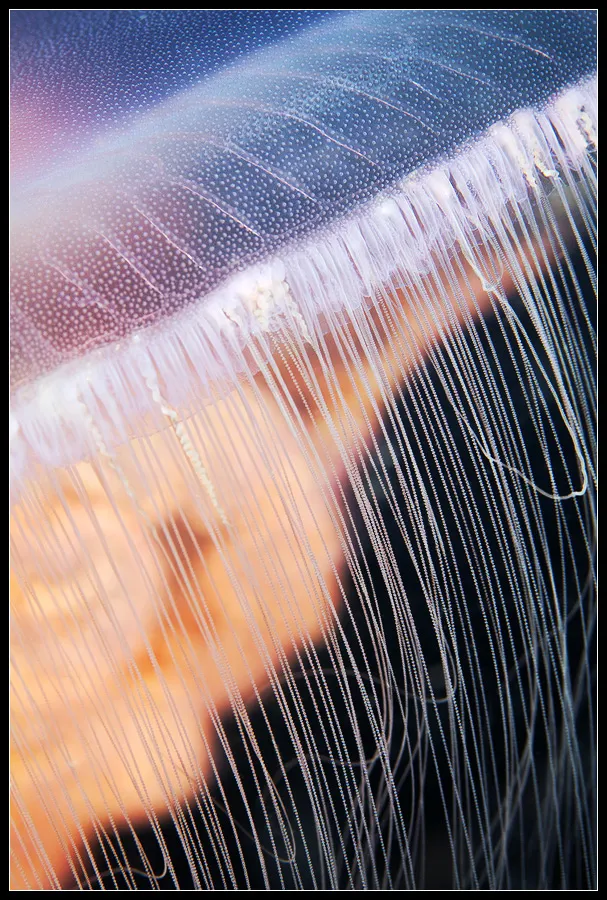Jellyfish Tentacles Close Up

Stinging cells (nematocysts) line the tentacles of this moon jelly (Aurelia aurita). Upon contact with prey or a predator, a venom-laden harpoon shoots out to stun or kill. Read more about jellyfish anatomy in our jellyfish and comb jellies overview page.

